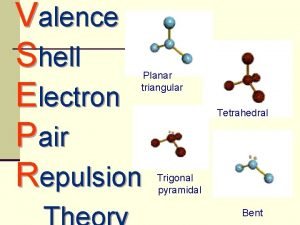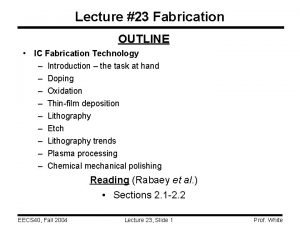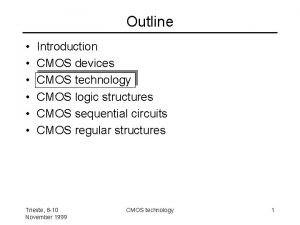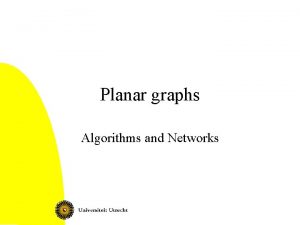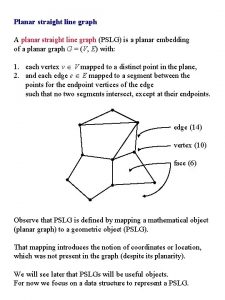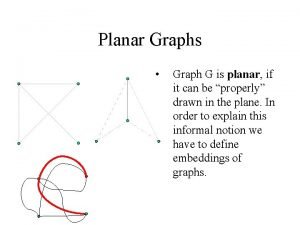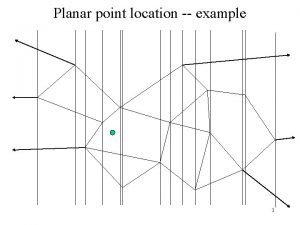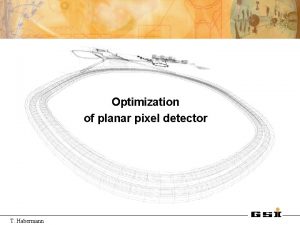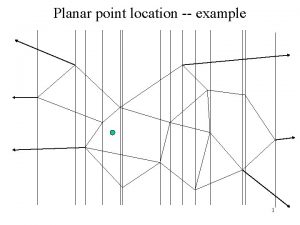The CMOS Process Planar CMOS process is used















- Slides: 15

The CMOS Process • Planar CMOS process is used up to the 28 nm technology node. • For later technology nodes, 3 D CMOS MOSFETs (Fin. FETs) are used. • Planar CMOS processes are still extensively used for analog and mixed -signal ICs. Classification of planar CMOS processes: example CMOS n-well 0. 18 mm 1 P 6 M Minimum channel length Number of metal layers Number of poly layers Type of Well (n-well, p-well, triple-well) P. Bruschi – Microelectronic System Design 1

Simplified designer's view of a CMOS Process • We are considering a simple n-well (twin-Tub) 1 P 2 M process • The starting substrate is p-type: all p-wells are shorted together since there are no insulation junctions with the substrate. • N-wells are insulated from the substrate if the latter is biased at the lowest voltage in the circuit. • A very lightly doped epitaxial layer is often present on top of a strongly doped wafer. P-wells are necessary to obtain the optimal doping for n. MOSFETS. P. Bruschi – Microelectronic System Design 2

The active areas • Active areas are all of the same type. • They are specialized by other layers (e. g. n-well). • p-wells are often drawn automatically as not(n-well) n-well Top view P. Bruschi – Microelectronic System Design 3

Polysilicon and gate oxide poly over active area poly out of active area MOSFET gate inteconnection • The gate (thin) oxide is grown on all active areas. • After that, it is covered by the polysilicon layer • When the poly is patterned, the gate oxide remains only where polysilicon remains, forming the gate. • Only one layer (poly) is required to control the final result of this step. P. Bruschi – Microelectronic System Design 4

FEOL (Front-End Of the Line) P. Bruschi – Microelectronic System Design 5

BEOL (Back End Of the Line) - Contacts • All devices created in the FEOL are covered by an insulating layer and holes are opened only where we want to contact them. These opening are the CONTACTS • Contacts can reach active areas (p+ or n+ doped portions of the substrate) or polysilicon (over the FOX). • Direct contact of polysilicon over the gates is not allowed Contacts Insulating Layer Thungsten Plugs P. Bruschi – Microelectronic System Design 6

BEOL: The interconnections P. Bruschi – Microelectronic System Design 7

Bonding Pads Layer: Passivation Opening P. Bruschi – Microelectronic System Design 8

The Triple Well n-well twin tub n-well buried well o buried layer P. Bruschi – Microelectronic System Design 9

Triple Well: Multiple PWells and NWells at independent voltages P. Bruschi – Microelectronic System Design 10

Bipolar processes Technology Available Devices Notes Bipolar Vertical NPN, Lateral PNP Complementary Bipolar Vertical NPN, Vertical PNP Used for precision and/or fast amplifier. Si-Ge versions for RF applications Bi. Fet BJTs and JFETs Used for precision / low bias current amplifiers P. Bruschi – Microelectronic System Design 11

Bi. CMOS, BCD, SOI Technology Available Devices Notes Bi. CMOS + BJTs BCD Bipolar, CMOS, DMOS Mixed Signal ICs High speed digital line drivers Smart Power SOI Silicon Insulator. on As CMOS, Bi. CMOS or BCD High Voltage and Rad Hard (e. g. space applications) P. Bruschi – Microelectronic System Design 12

Resistances in planar ICs Direction of the current W W / square Number of squares P. Bruschi – Microelectronic System Design 13

Vertical and lateral capacitances Area Perimeter Capacitance per unit area Capacitance per unit perimeter (Fringe capacitance) P. Bruschi – Microelectronic System Design 14

Lateral and Junction Capacitances n (or p) p (or n) Lateral Junction P. Bruschi – Microelectronic System Design 15
 Tetrahedral vs trigonal pyramidal
Tetrahedral vs trigonal pyramidal Basic planar process in ic fabrication
Basic planar process in ic fabrication Basic planar process in ic fabrication
Basic planar process in ic fabrication Cmos process flow
Cmos process flow Hình ảnh bộ gõ cơ thể búng tay
Hình ảnh bộ gõ cơ thể búng tay Lp html
Lp html Bổ thể
Bổ thể Tỉ lệ cơ thể trẻ em
Tỉ lệ cơ thể trẻ em Chó sói
Chó sói Thang điểm glasgow
Thang điểm glasgow Alleluia hat len nguoi oi
Alleluia hat len nguoi oi Môn thể thao bắt đầu bằng từ chạy
Môn thể thao bắt đầu bằng từ chạy Thế nào là hệ số cao nhất
Thế nào là hệ số cao nhất Các châu lục và đại dương trên thế giới
Các châu lục và đại dương trên thế giới Công thức tính thế năng
Công thức tính thế năng Trời xanh đây là của chúng ta thể thơ
Trời xanh đây là của chúng ta thể thơ
